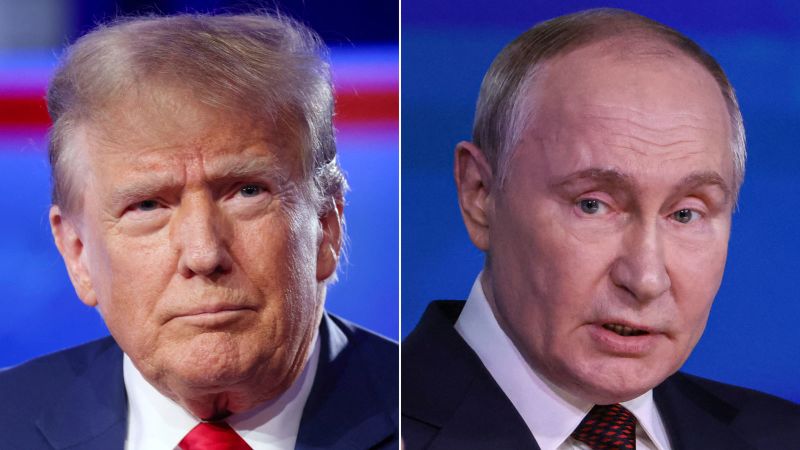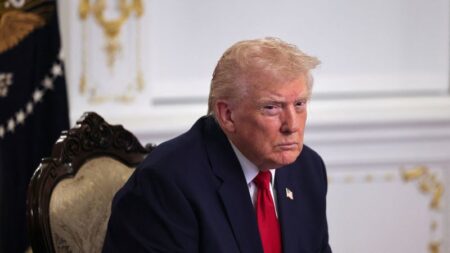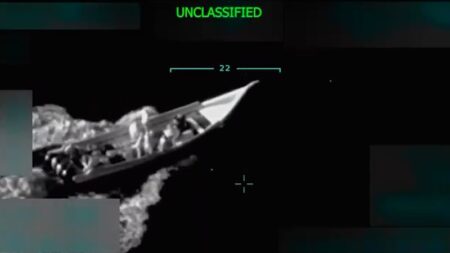The political landscape surrounding President Donald Trump, particularly regarding foreign policy decisions, has become increasingly complex and unpredictable in recent days. As Trump approaches the expiration of his self-imposed deadline for Russia to conclude its war in Ukraine, he finds himself navigating not just the repercussions of potential sanctions, but also the intricacies of upcoming discussions with Russian President Vladimir Putin and ongoing delicate trade negotiations with China. These factors collectively underscore a pivotal moment in international relations that could dictate Trump’s approach moving forward.
Earlier this week, Trump had promised to enact new sanctions against Russia, signaling his willingness to take a firm stance against Moscow. However, as the deadline drew nearer, he began exhibiting uncertainty regarding the efficacy of these sanctions. White House officials confirmed intentions to impose “secondary sanctions” targeting any nation continuing to buy Russian energy, emphasizing the administration’s strategic stance. Yet, by Thursday, as Trump sought avenues for a potential face-to-face meeting with Putin, his commitment seemed to wane, leaving observers unsure of his next steps.
Upon being questioned about the future of his June deadline and the new measures, Trump stated that it would ultimately depend on Putin’s actions. This statement indicated a significant shift in Trump’s posture, from one of firm ultimatum to a more reactive stance, where the onus of change appeared to rest with the Russian leader. Trump’s evolving rhetoric brought to light the inherent complexities of applying punitive measures while simultaneously pursuing dialogue, illustrating a delicate balancing act that raises questions about the administration’s overall strategy regarding the war in Ukraine.
Historically, Trump has expressed reluctance to engage in sanctions against Russia, largely out of concern that such actions could alienate Putin further and jeopardize chances for negotiation. His recent comments suggesting new tariffs, particularly a 25% levy on Indian imports of Russian oil, marked a notable escalation and indicated a pivot toward stricter measures against Russia. On that note, the president has also explored other avenues to tighten existing sanctions, focusing on aged tankers that transport Russian oil and examining enforcement on currently established sanctions.
European officials have voiced skepticism regarding Trump’s overture for dialogue, cautioning that a summit could merely serve as a stalling tactic on Putin’s part to extend the conflict and mitigate the impact of American sanctions. Behind the scenes, discussions between European leaders, including Ukrainian President Volodymyr Zelensky, revolve around the best approach to diplomatic engagement with the Kremlin. These diplomatic conversations reflect the anxiety felt by allies maneuvering through the complicated waters of U.S.-Russia relations, particularly in the context of the ongoing war.
In the backdrop of these developments, Trump has maintained a tone of frustration with Putin, indicating he remains open to innovations in economic sanctions while also exploring opportunities for diplomatic resolution. Although a summit has been proposed, details regarding the date, location, or agenda remain fluid and unresolved—an indication of the current lack of clarity in U.S.-Russia relations, and a potential signal of unpredictability in Trump’s future maneuverings.
As plans for the anticipated summit with Putin advance, the Kremlin has echoed the idea of such engagements while identifying dates and potential locations, including the United Arab Emirates as a potential neutral venue. The dialogue concerning the format of these meetings, as evidenced by conflicting reports regarding whether the Russian and Ukrainian leaders would participate simultaneously, underscores the nuanced approach being taken by both sides in navigating these diplomatic conversations.
American officials continue to work out the logistics for the summit, despite apparent contradictions in Trump’s public statements—where he oscillates between affirming the need for sanctions and the potential for dialogue. Such ambiguity reflects not only Trump’s struggle with the immediate context of economic penalties and their broader geopolitical implications but also his desire to appear proactive and engaged in seeking peace while remaining wary of being maneuvered by Putin.
Ultimately, as the situation evolves, it is clear that Trump’s foreign policy approach remains volatile, heavily influenced by real-time geopolitical dynamics resulting from the Russia-Ukraine conflict, trade negotiations with key global players, and the underlying tension of his potential summits with international leaders. All these factors collectively underscore the complexity of managing foreign relations in an unpredictable global climate.











